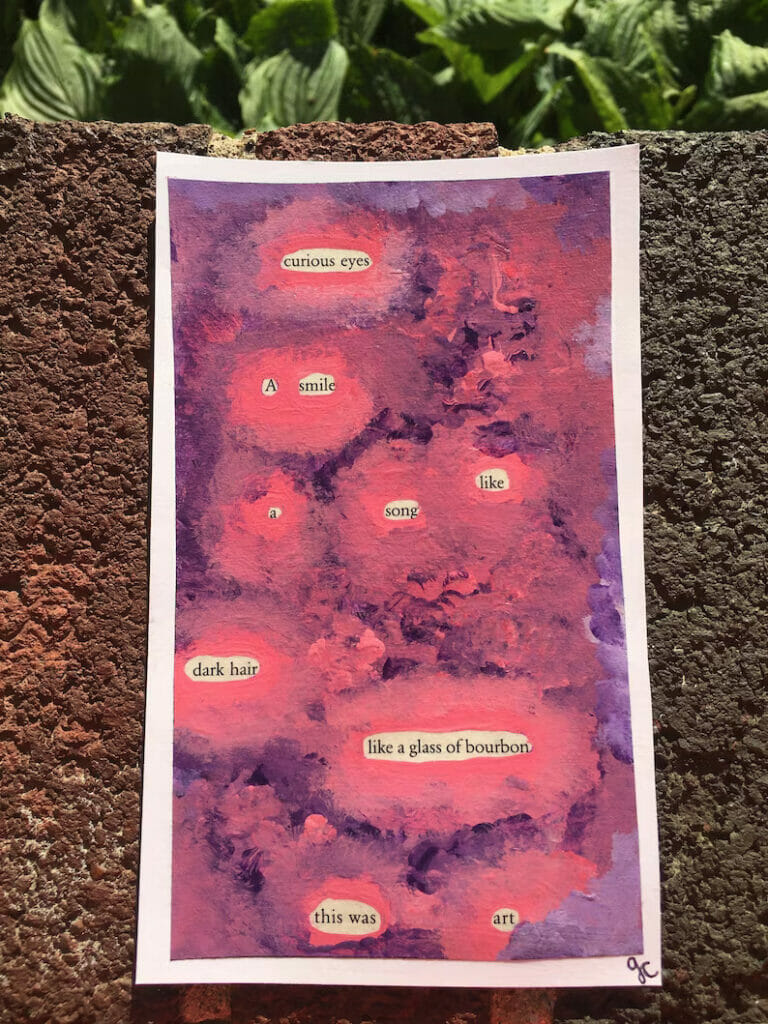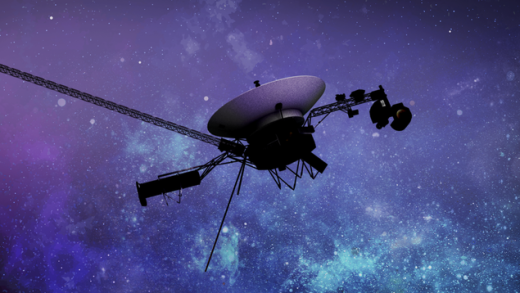Blackout poetry is for everyone, whether you see yourself as a creative person or you don’t think you have an artistic bone in your body. This unique artform blends literary and visual elements into a cohesive piece that can take infinite forms.
You’ve likely come across examples of blackout poetry in school or on social media. This form of expression is a popular choice for teachers and recently has become popular on platforms such as Instagram, Pinterest, and TikTok.
Blackout Poetry 101: An Introduction
Table of Contents
Based on its title, you may have guessed that blackout poetry, also called erasure poetry or redacted poetry, consists of blacking out sections of text to create a poem from the original text. It’s the art of taking an existing piece of literature and turning it into something completely new. What emerges from the carefully-selected words is new meaning and interpretation not only from the words that remain, but also from those now obscured and the visual it creates.
A Brief History of Blackout Poetry
Blackout poetry’s roots trace back as far as the days of Benjamin Franklin. Franklin’s neighbor Caleb Whiteford was known to make redactions on serious stories in the newspaper to create jokes for his friends. While this was not taken seriously at the time, it paved the way for others to practice and build upon this idea of creating new narratives from existing texts.
The artform didn’t really take off until 100 years later in the early 20th century. Then, it picked up traction with the avant-garde Dada and Surrealist movements. At a time where artists were eager to break free of traditional artistic norms, blackout poetry created a platform for non-traditional art and expression.
Notable figures, including Robert Rauschenberg in the 1950s and Tom Phillips in the 1960s, kept the ball rolling and pushed the artform of blackout poetry to evolve over the decades. Catapulting this form of poetry to the mainstream media can be attributed to the instant New York Times Bestselling Newspaper Blackout published by Austin Kleon in 2010.
The Internet and social media have helped blackout poetry increase in popularity as both recreational and serious creators are increasingly able to share their redacted masterpieces with wider audiences.
How to Create Blackout Poetry
This artform can be as simple or complex as you want it to be. The form most of us are familiar with consists of a page of text redacted with thick black marker leaving a careful selection of words behind to create a poem. At its core, it’s simple enough so anyone can partake in this form of expression—but the door is wide open for artistic liberties.
Here are 3 Steps to Make Your Own Erasure Poetry
- Select your text
The original text for blackout poetry can take any form—newspaper, novel, book of poems, essay, textbook or anything in between. There are many angles you can take and connections to be made from the text you choose for your blackout poem.
You may choose to select a text that relates to the topic of your poem. Or a piece that actively opposes your views so you can rewrite the story. Perhaps picking a random book off the shelf and seeing what jumps off the page is what sparks your creativity.
- Choose your words carefully
The next and most crucial step is to select the words to carry your message. As you read through your source text, identify phrases and words that resonate with you and work together to piece together a new narrative. Put a box around the words and phrases that you are going to keep and cross out the rest.
- Design the visual elements
Now that you have picked out the words to tell your story and can see where they land on the page it’s time to move from the literary into the visual realm to add the next layer of your composition. It’s about the words, but also how they interact visually on the page.
You may even choose to breathe new life into blackout poetry by skipping the black part of blackout. Many are infusing more creative flare into their work experimenting with different colors, mediums and visuals. These days you can find many examples of blackout poetry that incorporate line art and watercolor paint that push the envelope of design.

Why People Like Blackout Poetry
There are many reasons why people enjoy creating blackout poetry and why it has become increasingly popular over the years. One big draw is that this form of artistic expression is so accessible.
Intimidated by a blank page? Not a problem. Can’t draw? You don’t need to. Not good at coming up with words? The words are already there.
The process of creating blackout poetry makes it possible for people who may not have created art or poetry before to try their hand at it. Those who were already active in the creative space also love blackout poetry for its unique form of expression and limitless possibilities to blend art and wordplay.
The practice can bring participants therapeutic benefits from being able to rewrite their own narrative and embrace creativity. Many people find blackout poetry relaxing in ways similar to a coloring book or completing a puzzle.
Different people get varying benefits out of creative practices, and blackout poetry is no exception. Some may enjoy it because it fuels their love of reading and helps them build a strong vocabulary. Others may like it because it challenges them to creatively problem solve. While others gravitate toward blackout poetry as an outlet for stress relief or self expression.
Whatever the reason, you can’t really go wrong practicing a creative exercise you enjoy.
Blackout Poetry in the Digital Age
Some view social media like TikTok as major time-sucks, while others recognize it as a host of infinite amounts of shared knowledge. One thing about TikTok in particular is that it exposes you to so many new things you would otherwise never have learned about before.
If you have ever come across blackout poetry on TikTok, I can almost guarantee that you did not seek it out on your own. Your faithful FYP (for you page) gods delivered to land you on #blackoutpoetrytok.
One of the great things about social media and the Internet is that anyone can now share their work to inspire others just as anyone can view the work of others and become inspired.
The digital age has changed both how we access and create visual poetry. Creators can now experiment with digital tools to produce reimagined blackout poems with new depth, intricacy, and vibrancy. Simple digital tools such as Word and Google Docs or more complex tools like Procreate and Photoshop are bringing new innovation into practices such as blackout poetry.
This art form opens up new possibilities for creativity, art, and expression that anyone can take part in. People young or old, artistic or not creative are finding benefits and new meaning from this practice.
Give it a try. I think you’ll see that those who dare to look will find that there are hidden treasures buried in everyday life.
Those who dare to look will find that there are hidden treasures buried in everyday life.

Source : What is Blackout Poetry? How to Use Erasure Verse In Your Art















